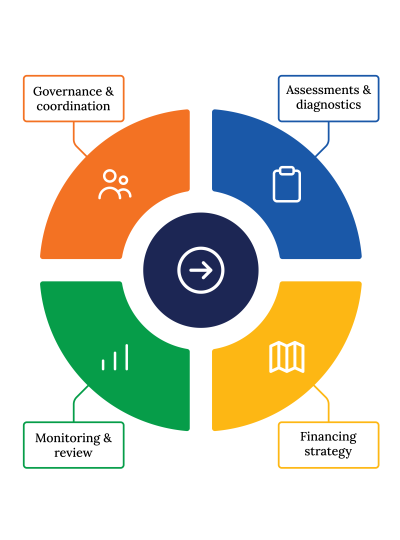Institution and community senior care
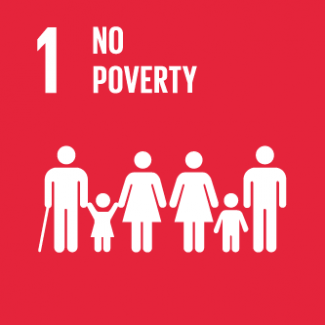

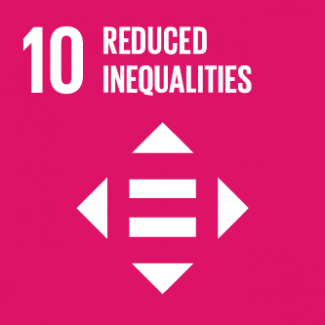
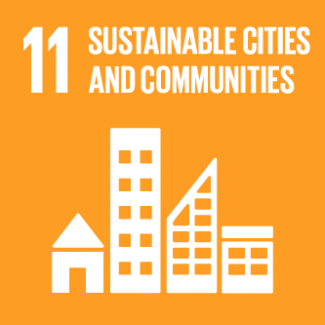
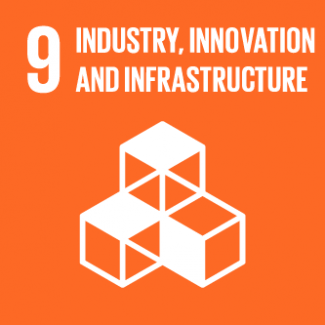
Business Model Description
Professional training for nursing staff includes educational agencies offering professional courses and caregiver agencies that introduce professional senior care staff to families. The educational agencies need to cooperate with senior care institutions and caregiver agencies to dispatch certified nursing staff effectively.
Expected Impact
Meet the increasing need of elderly care caused by the aging trend in China, improve the quality of senior care.
How is this information gathered?
Investment opportunities with potential to contribute to sustainable development are based on country-level SDG Investor Maps.
Disclaimer
UNDP, the Private Finance for the SDGs, and their affiliates (collectively “UNDP”) do not seek or solicit investment for programmes, projects, or opportunities described on this site (collectively “Programmes”) or any other Programmes, and nothing on this page should constitute a solicitation for investment. The actors listed on this site are not partners of UNDP, and their inclusion should not be construed as an endorsement or recommendation by UNDP for any relationship or investment.
The descriptions on this page are provided for informational purposes only. Only companies and enterprises that appear under the case study tab have been validated and vetted through UNDP programmes such as the Growth Stage Impact Ventures (GSIV), Business Call to Action (BCtA), or through other UN agencies. Even then, under no circumstances should their appearance on this website be construed as an endorsement for any relationship or investment. UNDP assumes no liability for investment losses directly or indirectly resulting from recommendations made, implied, or inferred by its research. Likewise, UNDP assumes no claim to investment gains directly or indirectly resulting from trading profits, investment management, or advisory fees obtained by following investment recommendations made, implied, or inferred by its research.
Investment involves risk, and all investments should be made with the supervision of a professional investment manager or advisor. The materials on the website are not an offer to sell or a solicitation of an offer to buy any investment, security, or commodity, nor shall any security be offered or sold to any person, in any jurisdiction in which such offer would be unlawful under the securities laws of such jurisdiction.
Country & Regions
- China: Anhui
- China: Jiangxi
- China: Fujian
- China: Yunnan
- China: Guangdong
Sector Classification
Health Care
Development need
China’s health sector currently still faces many challenges, including weak capacity of grass-roots service providers, imbalanced development and resources distribution between rural and urban areas in health sector and accelerated aging trend.
Policy priority
The Action Plan for Promoting the Quality of Health Industry Development (2019-2022) focused on leveraging digital technology in the health care sector. On the back of COVID-19, the National Health Commission published a notice requiring the Health Commissions in all provinces to build Internet-based platforms for controlling and preventing COVID-19 as general healthcare
Gender inequalities and marginalization issues
(1) Medical Financial Assistance (MFA) scheme in China did not offer adequate financial protection for marginalized people. (2) Women may be at risk or at greater risk of infection due to occupational gender segregation.
Investment opportunities introduction
The tageted subregions have low economic input in the healthcare sector, yet policy focus in this area is relatively strong. This indicates that the demand for better healthcare services and the need for further investment is high.
Key bottlenecks introduction
The shortage of medical talents in quantity and poor quality structure is the bottleneck that restricts the development of China's healthcare industry.
Health Care Providers
Development need
the rapid aging trend challenges healthcare delivery; access to nursing homes remains limited; there are significant regional disparities in the distribution of health resources; around 75% of older people suffer from noncommunicable chronic diseases; the demand gap of radiologists is increasing; the cure rate of early detection of cancer is low
Policy priority
China has made significant policy efforts to improve healthcare delivery. A national action plan (2018) was issued by the National Health and Family Planning Commission, planing to make diagnosis and treatment more convenient; gradually form a new system of medical services based on regional coordination, information sharing and service integration,.
Investment opportunities introduction
the 6 IOAs with the highest growth potential were shortlisted:internet healthcare, smart information systems in hospitals, Independent Clinical Laboratories (ICL),Medical imaging based on Artificial Intelligence technology, Smart home-use medical devices for chronic disease management,Senior care.
Health Care Delivery
Pipeline Opportunity
Institution and community senior care
Professional training for nursing staff includes educational agencies offering professional courses and caregiver agencies that introduce professional senior care staff to families. The educational agencies need to cooperate with senior care institutions and caregiver agencies to dispatch certified nursing staff effectively.
Business Case
Market Size and Environment
> USD 1 billion
20% - 25%
The market was worth USD 1.06 trillion in 2019.
Source: iiMedia Research
Indicative Return
10% - 15%
Taikang: the average profit margin is between 6% and 10%.
Most of the pension institutions in Japan are profitable, with an average rate of return of about 20%.
Investment Timeframe
Medium Term (5–10 years)
Interview states: It usually takes 6-8 years for a project from site selection, development to occupancy, and more than 20 years to achieve full balance of revenue and expenditure.
Market Risks & Scale Obstacles
Business - Business Model Unproven
Business - Business Model Unproven
Business - Business Model Unproven
Impact Case
Sustainable Development Need
China currently has 176 million people that are 65 or older, accounting for 12.6% of total population. According to World Population Prospects, the ratio are estimated to reach 14% by 2025 and 26% by 2050. The rapid aging trend create challenges for public services delivery.
Access to commercial and community-based nursing homes remains limited. As of 2016, 96% of elderly people were cared for by their family members at home, which can cause significant social and economic pressure.
Gender & Marginalisation
Rapid aging has limited access to nursing homes and many elderly people can not get senior care.
Expected Development Outcome
The professionalisation of staff can facilitate access to and improve the quality of senior care.
It will help meet the expanding and increasingly diversified needs for elderly people.
Gender & Marginalisation
The emergence of institution and community senior care has given more elderly people the opportunity to receive services and solved the serious problems caused by population aging.
Primary SDGs addressed

3.8.1 Coverage of essential health services

3.8.2 Proportion of population with large household expenditures on health as a share of total household expenditure or income
3.8.1 Coverage of essential health services
3.b.3 Proportion of health facilities that have a core set of relevant essential medicines available and affordable on a sustainable basis
Secondary SDGs addressed



Directly impacted stakeholders
People
Corporates
Public sector
Indirectly impacted stakeholders
People
Planet
Outcome Risks
Long investment timeframe, low profit margin and changable policy and subsidies will make the investment not achieve the expectation.
Impact Risks
Senior care facilities may attract conflicts in the communities they locate. There could be complains around these facilities for occupying public spaces and giving rise to higher rents.
Impact Classification
What
The outcome is very likely to be positive, important, long-term and large-scale because the investment can greatly solve the severe aging population problem in China.
Who
The elderly is underserved group in the society because they are disadvantaged and require special care.
Risk
Long investment timeframe, low profit margin and changable policy and subsidies will make the investment not achieve the expectation.
Impact Thesis
Meet the increasing need of elderly care caused by the aging trend in China, improve the quality of senior care.
Enabling Environment
Policy Environment
(Policy document): In February 2017, the Ministry of Civil Affairs published a notice urging the simplification of approval procedures for senior care institution and encouraging the establishment of new senior care facilities as well as pension investment funds.
In Feb 2017, the State Council issued guidelines for the development of the elderly care sector during the 13th five-year-plan. These guidelines state that home senior care should be regarded as the base, community senior care as support, and institutional senior care as supplement.
An annual pilot demonstrations of smart senior care enterprises have been carried out jointly by the Ministry of Industry and Information Technology, the Ministry of Civil Affairs, and the National Health Commission.Chinese government is to solve and relieve the problem of aging population.
Financial Environment
Financial incentives: the State Council is encouraging provincial governments to support private elderly care homes through fiscal measures such as providing loan discounts and subsidising investments and operations.
Fiscal incentives: Senior care services provided by senior care institutions are exempt from VAT. Income obtained from senior care services NGOs are temporarily exempted from enterprise income tax. Senior care institutions are temporarily exempted from property tax and land use tax.
Regulatory Environment
In November 2019, the Ministry of Civil Affairs announced new penal measures for dishonesty in the senior care service market as well as safety standards for pension institutions.
(Regulation): The regulation of senior care is strict
Marketplace Participants
Private Sector
Other common co-investors include insurance companies and real estate giants. They possess the necessary capital, clients and experience in building senior care community.
Government
Government guidance funds and special funds often serve as co-investors in the elderly care sector.
Target Locations
China: Anhui
China: Jiangxi
China: Fujian
China: Yunnan
China: Guangdong
References
- (1) Ministry of Foreign Affairs,2019 https://www.fmprc.gov.cn/mfa_eng/topics_665678/2030kcxfzyc/P020190924780823323749.pdf "2) UNDP.2019 https://www.cn.undp.org/content/china/en/home/library/human_development/national-human-development-report-special-edition.html"
- (3)UN Women. (2020). Policy Brief: The Impact of Covid-19 on Women and Girls. UN Women.
- (21) National Bureau of Statistics,https://data.stats.gov.cn/easyquery.htm?cn=C01 "22) ZX International, 2019, http://www.hunter-hr.com/2872.html "
- (23) Yicai, 2019, https://www.yicai.com/news/100421032.html
- (24) Yicai, 2018, https://www.yicai.com/news/5435650.html
- (25) Ministry of Civil Affairs, 2017, Notice on accelerating the reform of release, management and service of senior care service industry (《关于加快推进养老服务业放管服改革的通知》), http://mzzt.mca.gov.cn/article/zt_zylfw/zcyjd/mzbwj/201908/20190800019092.shtml
- (26) the State Department, 2017, Notice on printing and distributing the national plan for the development of aging and the construction of the senior care system during the 13th five year plan (《关于印发“十三五”国家老龄事业发展和养老体系建设规划的通知》) ,http://www.gov.cn/zhengce/content/2017-03/06/content_5173930.html
- (27) Ministry of Industry and Information Technology, Ministry of Civil Affairs and National Health Commission, 2017-2020, Notice on carrying out pilot demonstration of smart senior care (《关于开展智慧健康养老应用试点示范的通知》) ,www.mca.gov.cn/article/xw/tzgg/202007/20200700028725.shtml
- (28) Ministry of Civil Affairs, 2019, Management measures for the list of joint punishment objects for dishonesty in the senior care service market (Trial) (《养老服务市场失信联合惩戒对象名单管理办法(试行)》),www.mca.gov.cn/article/gk/wj/201911/20191100020903.shtml
- (29) Ministry of Civil Affairs, 2019, Safety standard for basic services of pension institutions (Draft for comments) (《养老机构基本服务安全规范(征求意见稿)》), http://www.mca.gov.cn/article/xw/tzgg/201911/20191100020916.shtml
- (30) Sohu, 2017, https://www.sohu.com/a/208482153_135357












